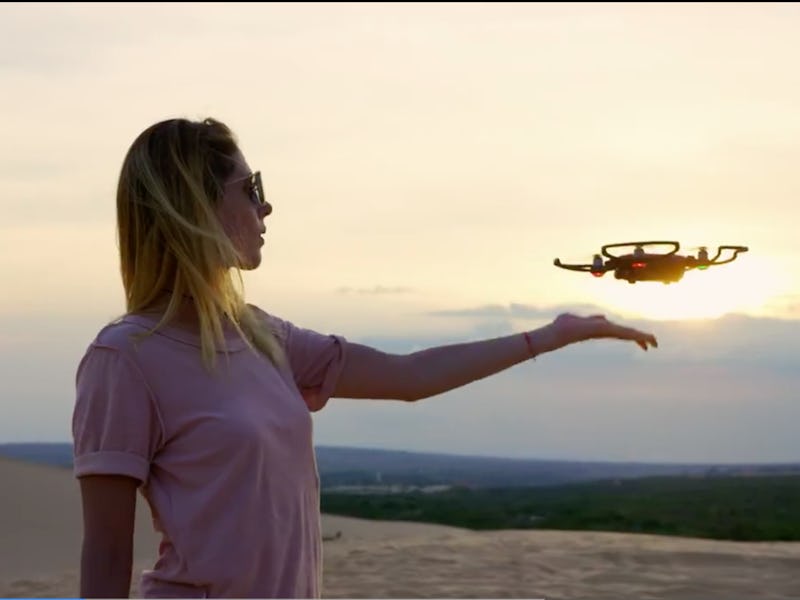A week ago, DJI debuted the DJI Spark, a drone that’s the size of a soda can and impressively, can be piloted with hand gestures. The tiny machine packs some tech under brightly colored plastic shell, which DJI had to trick in development to make sure it would work correctly.
The drone has to be able to recognize faces and the palm of your hands. The DJI team tried fooling the drone with different disguises to make sure it could always recognize a human face before it launched. The drone is also able to focus on palms to follow gestures, but it turns out that is not quite as specific.
“Spark launches once it’s recognized a face in front of it – not necessarily your face versus someone else’s face, just a human face,” Adam Lisberg of DJI tells Inverse. This allows the drone to orient itself and determine that it’s far enough away from you that it can safely take off, he says.
To make sure that the drone would be able to recognize any human face, DJI tested the drone extensively to make sure it wouldn’t react to the wrong thing, or not recognize a face, Lisberg explains. “We’ve tried fooling it with hats and beards and the like, but it was tested against a huge global face database, and it works pretty well.”
So you probably won’t be able to fly the Spark while wearing a horse head mask (bummer).
A promotional video for the DJI Spark shows a recent graduate launching the drone.
When it comes to palms, the Spark is a little less discerning, says Lisberg. Palms are wide features that are easy for the vision system to see that it’s there and how it is moving. “If you really want to fool it, you probably can,” he says. “Already I’ve seen videos where people managed to get Spark to recognize a hand held sideways, or a toy with a big palm, or a picture of a palm. All of that is fine with us, as long as people are being safe.”
Despite the tricks that can be played on the Spark using toy palms, Lisberg says that the drone is clearly still recognizing the flat palm correctly, whether it’s on a toy or not. If you want to play with one yourself, the $500 drones start shipping out on June 15.
